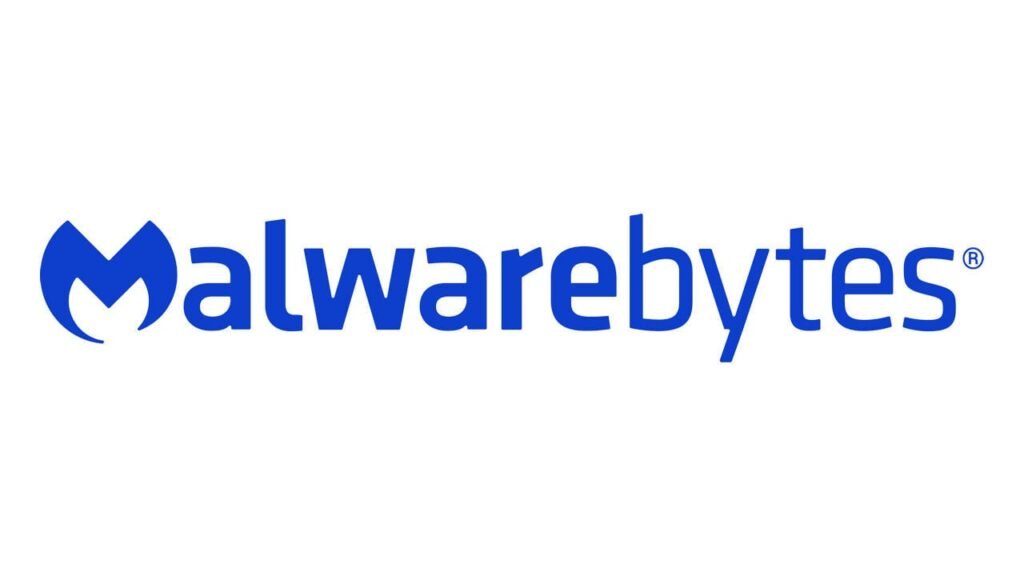In 2023, phishing attacks grew by 58.2%. This rise is linked to AI-driven voice phishing scams, or vishing. The FCC has made it illegal to use AI for robocalls. This shows how AI is a big risk for everyone.
Scammers use AI to mimic voices, even those of people you trust. They trick you into sharing personal info or money. It's important to know about these scams to protect yourself.
Using AI for voice scam prevention can help keep you safe. Knowing how scammers work is your best defense. For more tips, check out this resource on fighting AI voice scams.
Key Takeaways
- Voice phishing scams are on the rise, with a 58.2% increase in attacks.
- AI technology enables scammers to clone voices, making fraud harder to detect.
- Staying informed is key; knowledge about threats equips you to fight back.
- Utilizing AI-driven tools can boost your defenses against voice scams.
- Always verify caller identities to safeguard your personal information.
Understanding Voice Phishing Scams
Voice phishing, or vishing, is a sneaky way scammers use AI to trick people. They pretend to be someone you trust, like a family member or boss. This makes it tough to tell real from fake calls. The FBI in San Francisco warns that AI scams are getting worse, with voices cloned from just a short clip1.
These scams can really hurt. They cost businesses over $14 million a year, with scammers succeeding 77% of the time2. In 2022, vishing attacks jumped by 550%, showing how big of a problem it is2. Old ways to catch these scams don't work anymore, so we need new tech to stay safe.
We need a strong defense against these scams. This includes teaching employees about vishing, using advanced voice checks, and biometric tools. A security-focused culture helps employees spot and stop scams. Knowing how these scams work is key to keeping safe.
| Key Statistics | Details |
|---|---|
| Cost of Vishing Attacks | Businesses lose over $14 million annually due to vishing. |
| Success Rate | Attackers achieve a 77% success rate in voice phishing. |
| Increase in Incidents | Vishing incidents rose by 550% in 2022. |
| AI Cloning Capability | Voice cloning can replicate a voice from a short audio sample. |
| Current Threat Level | FBI warns that AI scams are increasingly prevalent. |
Knowing about voice phishing scams helps you stay safe. Stay alert and informed to protect yourself.
How AI Detects and Prevents Voice Phishing Scams
AI technology is key in fighting voice phishing scams. It helps keep users safe by spotting scams early. This technology is crucial for protecting against fraud.
Overview of AI Voice Fraud Detection Technologies
AI uses smart algorithms to check voice patterns for fraud. It watches voice calls in real-time to catch scams. Since late 2022, phishing has jumped by 1,265%, showing the need for AI to fight scams3.
Integration of AI in Telephone Systems
AI in phone systems adds extra protection. It checks who's calling and spots odd speech. Over 90% of cyberattacks start with phishing, making this tech very important4.
| Technology | Functionality | Impact on Phishing Detection |
|---|---|---|
| Machine Learning Algorithms | Analyze voice patterns and speech | Identify discrepancies indicating fraud |
| Real-Time Monitoring | Scan and flag suspicious calls | Preemptively block fraudulent communications |
| Caller ID Verification | Authenticate the identity of callers | Reduce risk of falling victim to scams |
AI is vital in today's digital world to fight voice scams. For more on AI and security, check out this resource on data protection5.
The Rise of AI Voice Cloning Scams
AI voice cloning scams are a big problem today. They use new tech to sound like people you know. It's important to understand this tech as it gets better.
Examples of AI Voice Cloning in Scams
AI voice cloning has gotten much better lately. A company in New York can make any voice sound real, even with breathing sounds. They support over 20 languages6.
Another company, ElevenLabs, can make a voice clone in just 45 seconds. You can get this service for $5 a month6. Scammers have even used these voices to trick people, making it seem real.
Recent Trends Noticed by Authorities
In 2023, scams cost Americans $2.7 billion, the FTC says7. People over 70 lost the most money, showing how scams target the elderly7. The FTC is working hard to stop these scams, giving $35,000 to researchers in March 20247.
Mechanisms Behind AI Voice Scams
It's important to know how AI voice scams work to stay safe. Voice cloning technology uses advanced algorithms to mimic a voice from just a small audio sample. Scammers can get your voice from public platforms, then use it to send fake messages.
How Voice Cloning Works
Voice cloning uses machine learning to study voice patterns, pitch, and tone. This tech has improved a lot, making fake voices sound very real. Almost 68% of people have seen more spam and scams because of AI8. It's getting harder for many to tell real messages from fake ones8.
Phases Involved in Executing Voice Phishing Attacks
Scammers go through several steps to pull off voice phishing attacks. First, they collect voice samples, often from social media. Then, they create AI messages for their targets. After that, they send out these fake messages to trick people.
These scams can lead to 43% of people leaving a brand8. To fight fraud, voice biometrics are being used more for identity checks9. It's crucial to understand these scam phases to stay safe.
Common Types of AI Voice Scams
It's important to know about AI voice scams to stay safe. Scammers use smart tricks to trick people. Here are some common scams:
Voice Cloning Scams
Voice cloning scams use AI to mimic voices. Scammers pretend to be someone you trust to get your personal info or money. In 2022, voice scams were a big problem for both people and businesses10.
Deepfake Scams
Deepfake scams use AI to make fake videos or audio. Scammers pretend to be famous people to trick you. It's hard to tell real from fake, as over half of people can't tell AI from real voices11.
Impersonation of Authority Figures
Scammers often pretend to be in charge. They might sound like bosses or government officials to get your info or money. Bank and tech support scams are common10. They try to scare you into doing what they want.
How to Stay Informed About Emerging Scams
It's important to stay informed about scams today, especially with AI scams on the rise. As technology gets better, so do the scams that target people. Getting regular updates and alerts helps you spot and dodge threats.
Importance of Staying Updated
There's been a huge jump in phishing emails, over 1,200% since late 2022, thanks to AI tools12. Keeping up with new scams is key to staying safe from fraud. Since many can't tell AI from real writing, it's crucial to keep learning and staying alert.
Resources for Learning About AI Scams
There are many trusted sources for learning about AI scams. The Securities and Exchange Commission (SEC) watches over AI trading platforms12. The Canadian Anti-Fraud Centre shares tips on new scam tactics13. Joining community efforts can also help you understand AI scams better. This way, you can lower your chances of getting scammed.
| Resource | Description | Type of Information |
|---|---|---|
| Securities and Exchange Commission (SEC) | Regulates AI trading platforms to prevent scams. | Financial Safety |
| Canadian Anti-Fraud Centre | Offers insights into emerging scam tactics and prevention tips. | General Awareness |
| FBI and FTC Alerts | Provides updates on current scams affecting the public. | Scam Alerts |
| Local Community Workshops | Educational sessions focused on avoiding scams. | Community Education |
Tips for Protecting Yourself from AI Voice Scams
To stay safe from AI voice scams, you need to be proactive. Taking a few simple steps can greatly improve your safety. Always verify who is calling you. Scammers can now make voices sound real, so it's key to know who's on the phone.
Verify Caller Identity
If someone calls asking for personal info or money, don't act fast. Try to reach out to them through a known number. For example, if they claim to be a family member, call them to check, as AI can mimic voices with just a small sample14. Scammers can easily fake numbers, making it even more important to check15.
Recognize Red Flags in Phone Conversations
Be careful during calls for signs of scams. Look out for odd requests, urgent money needs, or stories that don't add up. If something seems wrong, listen to your gut. Scammers try to get you emotional, so stay calm and ask direct questions15.
Limit Personal Information Sharing Online
Sharing less on social media can also protect you. Scammers use public info to craft scams. By sharing less, you make it harder for them to scam you. Remember, even short audio clips from your social media can be used to fake your voice16.
The Role of Technology in Voice Scam Prevention
Technology has become a big help in stopping voice scams. Scammers use AI voice cloning tools to trick people. These tools, which are often free and easy to find, let fraudsters make fake voices from just a short clip of a real voice17
AI Safeguards Against Voice Scams
AI is key in fighting voice scams. It helps spot suspicious activities. Scammers are now targeting banks, using old tricks to get money18. Banks are using new methods like multi-factor authentication and behavioral analytics to stay safe19.
Voice Phishing Detection Technology
AI helps banks and companies check for odd transactions. Tools like Truecaller’s AI Call Scanner can tell if a voice is fake, sending alerts18. These tools make accounts safer, giving people peace of mind when dealing with money17.
| Technology Type | Purpose | Example |
|---|---|---|
| AI Voice Cloning Detection | Identifies AI-generated voices | Truecaller’s AI Call Scanner |
| Multi-Factor Authentication | Secures accounts against unauthorized access | Banking apps with biometric verification |
| Behavioral Analytics | Detects unusual patterns in transactions | AI algorithms detecting anomalies in spending |
Practical Steps for Emergency Call Verification
When unexpected calls come, it's key to verify them. Setting up systems of trust and using tech can boost your safety against scams.
Establishing Codes or Passwords with Family
Creating unique codes or passwords is a smart move. It lets you check if a call is from a family member. Agreeing on a special phrase makes your communication safe from scammers.
Using Reverse Phone Lookup Tools
Reverse phone lookup tools are very helpful today. They check if a number is safe or linked to scammers. Since scammers can mimic voices in just three seconds, these tools are crucial20. They help prevent financial loss, especially since over 77% of AI voice scam victims lose money20.
| Emergency Verification Method | Benefit | Implementation Steps |
|---|---|---|
| Family Codes/Passwords | Ensures immediate verification of caller identity | Discuss code with family members; practice using it |
| Reverse Phone Lookup | Identifies potential scam callers | Access online tools; input unknown numbers |
| Awareness Training | Educates family on recognizing scams | Hold monthly discussions; share articles |
By taking these steps, you can lower the risk of falling for AI voice scams. This makes your communication safer20.
Reporting and Responding to AI Voice Scams
Being targeted by AI voice scams can be upsetting and confusing. It's key to report these scams and act quickly after being scammed. This helps protect you and others from future risks.
How to Report a Suspected Scam
If you think you've had a fake voice call, start reporting it right away. Tell the Federal Trade Commission (FTC) as they fight fraud. Also, report it to your state or local consumer protection office to get help faster. To help others, learn how to report AI voice scams and share your story.
Actions to Take if You’ve Been Scammed
Right after realizing you've been scammed, take action fast. Tell your bank and any financial places to protect your money. Change your passwords and use two-factor authentication on important accounts. Tell your friends or family to help them avoid scams too. Knowing the signs of AI scams can help you stay safe.
If you're in this situation, quick and smart action can lessen the damage2122.
Key Takeaways on Defending Against Voice Phishing
Defending against voice phishing needs constant vigilance and learning. Cybercriminals use new tech to scam people. Knowing these tactics helps keep you safe and helps your community too.
Staying Vigilant and Educated
Being aware is key to fighting voice phishing. There's been an 856% jump in AI phishing, showing how fast threats grow23. Scammers make messages that seem real, so it's crucial to know the signs24. To stay safe, take security classes and keep up with new threats.
Community Awareness and Shared Knowledge
Working together to fight voice phishing is important. Talking about new scams helps everyone stay alert25. Sharing tips and stories helps your community get better at avoiding scams. Going to workshops can also teach you how to spot and stop these scams23.
Future of AI in Voice Scams and Prevention
The future of AI in voice scams is complex and changing fast. Scammers are getting better at using technology, and we need to keep up to protect ourselves. AI will be key in both scamming and stopping these crimes.
Predictions for AI and Cybersecurity Landscape
Experts say scammers will use advanced AI to fake voices, making it harder to tell real from fake. It only takes three seconds to make a fake voice call with Generative AI26. In the U.S., 33% of phone scams are from impostors, showing how big the problem is27. Companies are already losing a lot of money to these scams, and it will only get worse as AI gets better.
Potential Advances in Voice Scam Technology
The growth in scam technology is both good and bad. It helps scammers make better scams, but it also helps us find new ways to stop them. For example, Hiya Protect uses AI to block bad calls in real-time, keeping up with new scams26. As AI gets smarter, we'll find even better ways to keep people and businesses safe from scams.
| Technology | Impact | Examples |
|---|---|---|
| Generative AI | Voice Cloning | Scams impersonating loved ones |
| AI Voice Recognition | Imposter Call Detection | Blocking fraudulent numbers |
| Adaptive AI | Real-time Scam Protection | Hiya Protect system |
Staying informed and taking action will be crucial in dealing with the future of AI in voice scams. Companies need to keep investing in security to fight these smarter scams. This will help keep their assets and customers safe.
Conclusion
It's crucial to understand how voice phishing scams work to protect yourself. Phishing has become a big problem, costing billions each year. Knowing how to spot fraud is more important than ever2829.
Old methods can't keep up with new tricks, but AI is changing the game. It helps detect fraud better. This means we can stay safer online, especially if we all learn to be more careful28.
By keeping up with the latest scams and sharing what you know, we can all be safer. It's important to stay alert and protect our personal info. Thanks to AI, we're getting better at fighting these scams.







